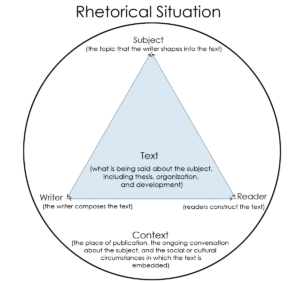In their article, “The Impact of Organizational Diversity Policies on Minority Employees’ Leadership Self-Perceptions and Goals”, Seval Gündemir, John F. Dovidio , Astrid C. Homan , and Carsten K. W. De Dreu conclude that organizations with policies which favor acknowledgement and encouragement of differences at either a sub-group or individual level have a higher chance of minority retention and advancement. They deduce this has an overall positive effect on the organization. I believed as much before ever reading the article.
I gravitated towards using this approach in an attempt to set up the rest of my argument. It is clear to the reader after three sentences what my position is and establishes expectations for the remainder of my piece. I will cite the article further in an attempt to explain myself. I may or may not cite sources which feature differing views. However, the ultimate conclusion the reader will draw is that I support the authors’ premise that diversity has a positive effect on organizations.
I am lucky enough to have seen with my own eyes the positive effects of an organization having embraced diversity. As I mentioned last week, my company has been implementing several initiatives as it works to attract, retain and advance a more diverse workforce. The Gundemir article reinforced conclusions I’ve drawn as I have observed these changes over my thirteen years with the company.
There are a number of “Employee Resource Groups” which celebrate the qualities that make certain sub-groups unique. These groups typically sponsor initiatives and host events which focus on matters which are of particular interest to their members. However, any employee is welcome to participate. For example, a group for Developing Young Professionals, which focuses on the specific challenges faced by younger employees, continues to invite me to participate in events despite the fact that I’m not that young anymore (Bruce Springsteen reference most definitely intended.).
A few years ago, one of the responsibilities of my team was to coordinate the monthly IT security patch process. For those who may be unfamiliar, this essentially required members of my team to coordinate the discovery, review and application of security patches (changes intended to remove a security vulnerability in computer software) on thousands of IT devices. As the scope of our work increased, one of the options discussed was exactly the type of arrangement described in the article by Austin and Pisano. While we wouldn’t be employing neuro-diverse staff ourselves, we would be working with an outside vendor in a managed service agreement.
Senior leadership ultimately decided to go with a different approach but reading Austin and Pisano’s article led me to think back on that and imagine what that arrangement would have been like. There was certainly the “feel-good” factor of working with people who might not otherwise find this type of well-paying employment. Yet, I’m struck more by a sense of opportunity lost. There are many challenges which continue to exist with our patch management process, and I remain convinced that the services provided by the vendor who employed neuro-diverse staff would have been a tremendous help.
It wasn’t until I read the article that I even considered some of the many changes that would have been required. The example about changes to communications was particularly striking. I wonder just how many emails and other communications sent to neuro-typical and neuro-diverse staff alike lead to misunderstandings today. The last paragraph of Austin and Pisano’s article made me immediately think about the rectangle and triangle presentation I shared with you all last week. Being a manager has its share of challenges. I’ve found that connecting with each of my direct reports as individuals is the best way to achieve our collective goals. It certainly isn’t easy, but thinking about how everyone is a puzzle piece, just waiting to fit next to one another is a great way to look at it.

